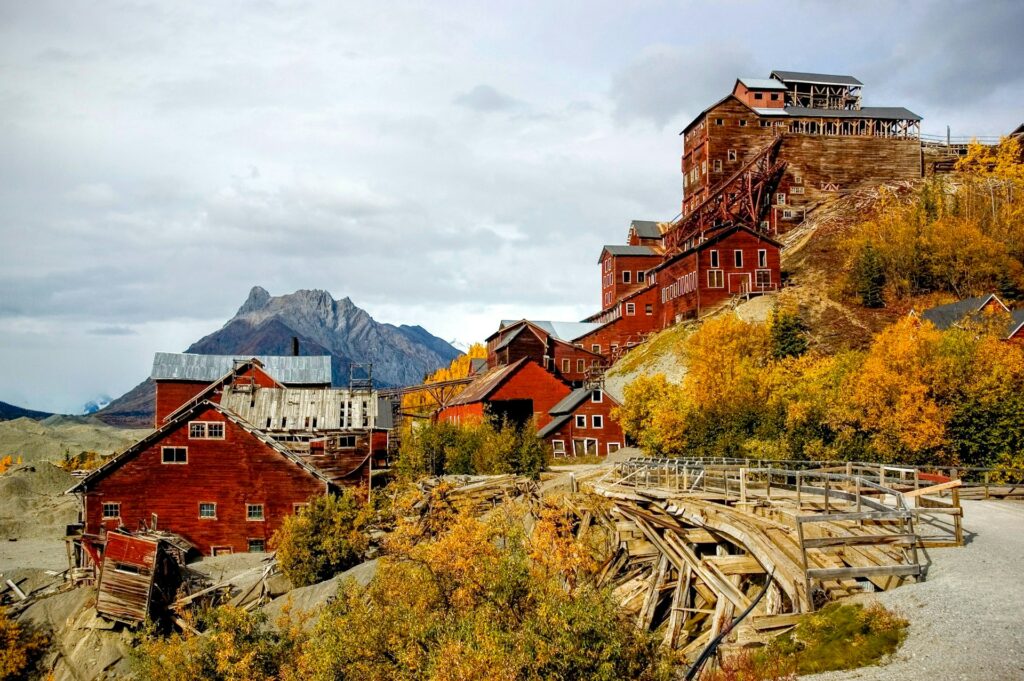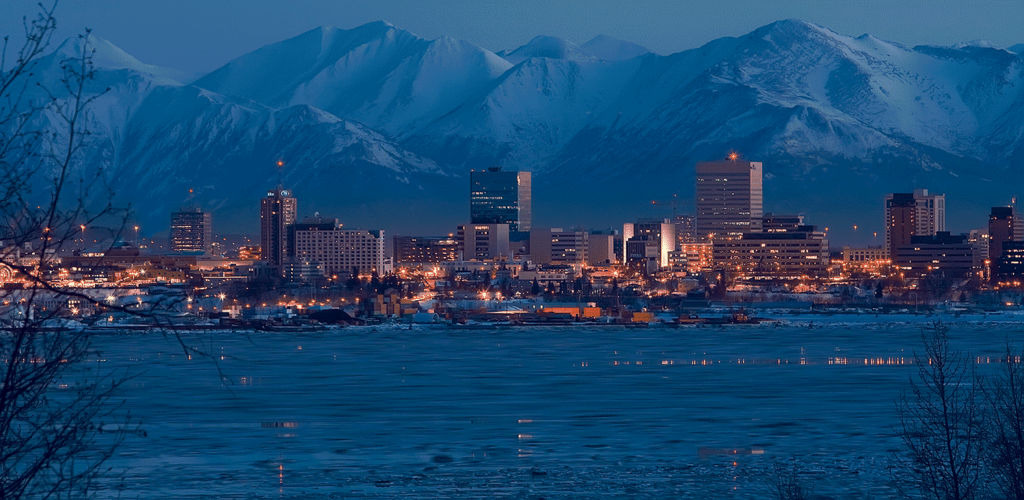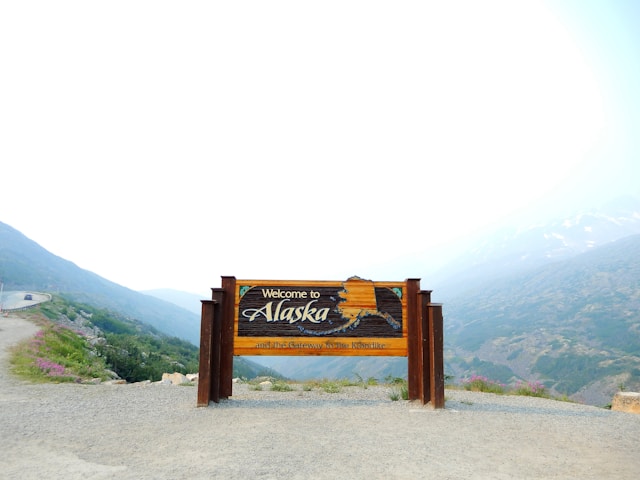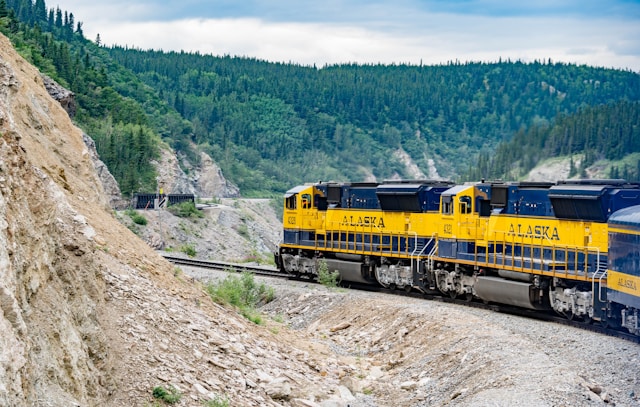Alaska represents one of America’s most unique and lucrative investment destinations, offering unprecedented access to vast natural resources, emerging tourism markets, and strategic economic opportunities that capitalize on the state’s distinctive geographical and economic advantages. As the largest state in the United States by land area, Alaska presents investors with diverse opportunities spanning energy, mining, fisheries, tourism, and real estate sectors that benefit from the state’s abundant natural wealth and strategic Arctic location.
The state’s economy, traditionally anchored by oil and gas production, is experiencing significant diversification as new industries emerge and established sectors modernize. Alaska’s proximity to Asian markets, combined with its vast untapped resources and growing infrastructure development, creates compelling investment opportunities for both domestic and international investors seeking exposure to one of America’s most resource-rich regions.

From the booming cruise tourism industry to the emerging renewable energy sector, Alaska offers investors the chance to participate in economic growth while benefiting from favorable tax structures, government incentives, and the state’s commitment to sustainable development. The unique combination of natural resource abundance, strategic location, and evolving economic landscape makes Alaska an increasingly attractive destination for forward-thinking investors.
Why Invest in Alaska: The Compelling Case for America’s Resource Powerhouse
Alaska’s investment appeal stems from several fundamental advantages that position it as a premier destination for resource-focused and strategic investments. The state generates over $50 billion in annual economic output despite having fewer than 750,000 residents, demonstrating remarkable per-capita productivity driven by high-value natural resource extraction and processing industries.
The Alaska Permanent Fund, valued at over $80 billion, represents one of the world’s largest sovereign wealth funds and demonstrates the state’s fiscal responsibility and long-term planning capabilities. This fund, built from oil revenues, provides annual dividends to residents while creating economic stability that supports business investment and consumer spending throughout the state.
Alaska’s strategic location offers unparalleled access to Asian markets, with Anchorage positioned as a critical hub for trans-Pacific cargo operations. The Ted Stevens Anchorage International Airport ranks among the world’s busiest cargo airports, handling over 3 million tons of freight annually and serving as a refueling stop for flights between North America and Asia.
The state’s regulatory environment strongly favors business development, with no state income tax, no statewide sales tax, and numerous tax incentives for businesses in key sectors. Alaska’s pro-business climate, combined with streamlined permitting processes for resource development projects, creates an attractive environment for companies seeking to establish operations in natural resource and logistics sectors.

Federal and state infrastructure investments continue to enhance Alaska’s economic competitiveness. Major projects including port expansions, road construction, and broadband development improve connectivity while creating business opportunities for contractors, suppliers, and service providers across multiple industries.
Alaska’s workforce, while smaller than other states, demonstrates high productivity and specialization in key industries. The state’s educational institutions, including the University of Alaska system, provide specialized training in natural resource management, engineering, and other fields critical to Alaska’s economy.
Natural Resources: Alaska’s Foundation for Wealth Creation
Alaska’s natural resource sector forms the backbone of the state’s economy and presents some of the most significant investment opportunities available in North America. The state holds an estimated 13 billion barrels of proven oil reserves, primarily concentrated in the Prudhoe Bay area and the National Petroleum Reserve-Alaska, with additional discoveries continuing to expand these estimates.

The Trans-Alaska Pipeline System, stretching 800 miles from Prudhoe Bay to Valdez, represents critical infrastructure supporting ongoing oil production while demonstrating Alaska’s capacity for large-scale resource development projects. Recent technological advances in extraction techniques have made previously uneconomical reserves viable, extending the productive life of existing fields while opening new areas for development.
Natural gas resources present enormous potential, with Alaska holding approximately 25% of America’s proven natural gas reserves. The Alaska LNG project, designed to export liquefied natural gas to Asian markets, represents a $45 billion investment opportunity that could transform Alaska’s energy sector while providing decades of economic benefits.
Mining operations across Alaska extract gold, silver, copper, zinc, and rare earth minerals essential for modern technology applications. The state’s mining industry generates over $3 billion annually, with major projects like the Red Dog mine ranking among the world’s largest zinc producers. Emerging opportunities in rare earth mineral extraction position Alaska as a critical supplier for renewable energy and technology sectors.
Alaska’s fisheries represent another cornerstone of the natural resource economy, with the state producing over half of America’s commercial seafood harvest. The industry generates over $5 billion annually while supporting sustainable practices that ensure long-term resource availability. Investment opportunities span commercial fishing operations, processing facilities, and aquaculture development.
Renewable energy resources, including wind, hydro, and geothermal power, offer emerging investment opportunities as Alaska seeks to diversify its energy portfolio. The state’s abundant renewable resources, combined with federal incentives and state support programs, create attractive opportunities for clean energy development projects.
Tourism Industry: Capitalizing on Alaska’s Natural Wonders
Alaska’s tourism industry has experienced remarkable growth, welcoming over 2.3 million visitors annually and generating more than $4.5 billion in economic impact. The state’s pristine wilderness, unique wildlife, and distinctive cultural heritage create compelling attractions that drive consistent visitor growth and support diverse tourism-related investment opportunities.

The cruise industry represents Alaska’s largest tourism sector, with over 1.3 million passengers visiting annually during the summer season. Major cruise lines including Princess, Celebrity, and Norwegian operate regular Alaska itineraries, creating demand for shore excursions, retail operations, and hospitality services in ports throughout Southeast and Southcentral Alaska.
Adventure tourism continues to expand as visitors seek authentic outdoor experiences unavailable in other destinations. Activities including bear viewing, glacier tours, fishing expeditions, and wilderness adventures command premium pricing while creating opportunities for specialized tour operators, equipment suppliers, and accommodation providers.
Alaska’s lodge and resort sector serves both leisure travelers and corporate groups seeking unique venues for meetings and incentive programs. Remote lodges offering world-class fishing, hunting, and wilderness experiences often achieve occupancy rates exceeding 90% during peak seasons while commanding daily rates of $500-2,000 per person.
The recreational vehicle and independent travel market represents a growing segment, with visitors driving the Alaska Highway and exploring the state’s road-accessible destinations. This market supports campground development, RV service facilities, and retail operations catering to self-directed travelers.
Cultural tourism, showcasing Alaska Native heritage and traditions, provides opportunities for community-based tourism enterprises while preserving traditional cultures. These initiatives often receive government support and grant funding, making them attractive for investors interested in socially responsible investments.
Winter tourism development presents emerging opportunities as Alaska promotes year-round visitation. Aurora viewing, dog sledding, and winter sports activities extend the tourism season while diversifying revenue streams for tourism-dependent communities.
Real Estate and Infrastructure: Building Alaska’s Future
Alaska’s real estate market presents unique opportunities driven by resource development, population growth in key areas, and infrastructure modernization projects. While the overall population remains stable, certain regions experience significant growth driven by economic development and resource extraction activities.

Anchorage, home to nearly half of Alaska’s population, demonstrates the strongest real estate fundamentals with consistent demand for both residential and commercial properties. The city’s role as Alaska’s economic and transportation hub supports property values while creating opportunities for retail, office, and industrial development projects.
Industrial real estate commands premium pricing due to limited supply and strong demand from resource extraction and logistics companies. Facilities near transportation infrastructure, including ports, airports, and rail lines, achieve particularly high values due to their strategic importance for Alaska’s resource-based economy.
The housing market in resource-rich regions often experiences boom-and-bust cycles tied to commodity prices and development activity. Investors who understand these cycles can achieve substantial returns by timing purchases and developments to coincide with resource development phases.
Infrastructure development projects create numerous investment opportunities across construction, engineering, and related service sectors. Major projects including port expansions, road construction, and utility upgrades require substantial private sector participation while generating long-term economic benefits.
Remote property development, while challenging, offers significant potential returns for investors willing to navigate complex logistics and regulatory requirements. Properties with resource extraction potential or strategic locations for logistics operations command premium valuations.
Government and military facilities represent stable tenants for commercial real estate investments, with federal agencies and military installations providing consistent demand for office, warehouse, and residential properties throughout Alaska.
Energy Sector: Powering Alaska’s Economic Future
Alaska’s energy sector encompasses traditional oil and gas production alongside emerging renewable energy opportunities that position the state as a leader in America’s energy transition. The sector’s evolution from purely fossil fuel-dependent to diversified energy production creates investment opportunities across multiple subsectors and technologies.
Oil and gas production remains Alaska’s dominant energy sector, generating over $3 billion annually in state revenues while supporting thousands of high-paying jobs. Recent discoveries, including the Willow project on the North Slope, demonstrate continued potential for conventional energy development and long-term investment returns.
Pipeline infrastructure represents critical energy sector assets, with expansion and modernization projects creating opportunities for engineering firms, construction companies, and specialized service providers. The existing pipeline network requires ongoing maintenance and upgrades that support consistent business opportunities.
Renewable energy development accelerates as Alaska seeks energy independence and cost reduction for remote communities. Wind, hydro, and geothermal projects receive federal and state incentives while addressing critical energy needs in areas not connected to the main electrical grid.
Energy storage solutions become increasingly important as Alaska integrates renewable energy sources and seeks to reduce reliance on diesel fuel in remote communities. Battery technology, pumped hydro storage, and other innovative solutions create opportunities for technology companies and infrastructure developers.
Electricity generation and distribution infrastructure requires substantial modernization and expansion to support economic development while improving reliability for existing customers. Utility-scale projects, including transmission lines and generation facilities, offer stable, regulated returns for infrastructure investors.
Carbon capture and storage technologies present emerging opportunities as Alaska’s energy sector adapts to environmental regulations and market demands for cleaner energy production. The state’s geological formations and existing infrastructure provide advantages for carbon management projects.
Market Trends and Economic Indicators
Alaska’s economy demonstrates resilience and adaptation capabilities that support continued investment opportunities despite challenges including population decline in some regions and commodity price volatility. The state’s GDP per capita ranks among America’s highest, reflecting the productivity and value generation of Alaska’s resource-based economy.
Employment trends indicate economic diversification, with growth in professional services, healthcare, and technology sectors complementing traditional resource extraction industries. The creation of higher-skilled jobs in emerging sectors indicates economic sophistication and long-term sustainability.
Federal spending represents a significant economic driver, with military installations, research facilities, and infrastructure projects providing stable economic foundation that supports private sector investment. Alaska receives substantially more federal spending per capita than most other states, creating multiplier effects throughout the economy.
Resource commodity prices directly impact Alaska’s economic performance, with oil prices particularly influential on state revenues and economic activity. Understanding commodity cycles and their impact on different sectors helps investors time entry and exit strategies for maximum returns.
Infrastructure investment continues at substantial levels, with federal and state funding supporting transportation, communications, and utility projects that enhance Alaska’s economic competitiveness while creating business opportunities for contractors and suppliers.
Population dynamics vary significantly by region, with some areas experiencing growth while others face decline. Resource development areas often see population increases that support housing, retail, and service sector investments, while regions dependent on declining industries may face challenges.
Climate change impacts create both challenges and opportunities, with warming temperatures potentially opening new shipping routes and extending operating seasons while requiring adaptation investments in infrastructure and resource management.
Investment Risks and Mitigation Strategies
Alaska investments face unique risks that require careful consideration and specialized mitigation strategies. Environmental regulations and permitting processes can be complex and time-consuming, particularly for resource extraction and development projects, requiring investors to build substantial regulatory expertise and local relationships.
Weather and climate conditions pose operational challenges that affect everything from construction schedules to transportation costs. Successful Alaska investors incorporate weather-related delays and cost increases into their planning while investing in appropriate equipment and facilities designed for harsh conditions.
Commodity price volatility significantly impacts Alaska’s economy, with oil price fluctuations particularly affecting state revenues, employment, and economic activity. Diversification across sectors and commodity cycles helps mitigate exposure to any single commodity while maintaining upside potential.
Geographic isolation increases costs for transportation, labor, and materials while limiting market access for some products and services. Investors must carefully analyze logistics costs and supply chain requirements while identifying opportunities where Alaska’s location provides competitive advantages.
Regulatory changes, particularly those affecting resource extraction and environmental protection, can significantly impact investment returns. Staying informed about regulatory developments and maintaining relationships with relevant agencies helps investors anticipate and adapt to changing requirements.
Limited infrastructure in some regions constrains development opportunities while increasing costs for businesses requiring reliable transportation, communications, or utilities. Investors must assess infrastructure requirements carefully while considering potential improvements that could enhance project viability.
Economic dependence on federal spending and resource extraction creates vulnerability to external factors beyond investor control. Diversification strategies and flexible business models help mitigate exposure to these systemic risks while maintaining growth potential.
Expert Tips for Successful Alaska Investment
Successful Alaska investment requires specialized knowledge, local partnerships, and strategies adapted to the state’s unique characteristics. Building relationships with local businesses, government agencies, and community leaders provides access to opportunities and market intelligence while facilitating project approvals and operations.
Understanding Alaska’s regulatory environment proves essential for most investment opportunities, particularly those involving natural resources or land development. Engaging experienced local legal and consulting professionals helps navigate complex requirements while avoiding costly delays and compliance issues.
Timing considerations become particularly important in Alaska, where seasonal variations affect everything from construction schedules to tourism demand. Successful investors plan projects around weather patterns, resource extraction cycles, and seasonal economic activity to optimize returns.
Financial planning must account for higher operating costs, extended project timelines, and unique tax considerations that affect Alaska investments. Building appropriate contingencies into budgets while taking advantage of available tax incentives optimizes financial performance.
Due diligence processes require additional attention to environmental factors, regulatory compliance, and infrastructure availability that may not be relevant in other markets. Thorough site visits, environmental assessments, and regulatory reviews prevent costly surprises during project implementation.
Local workforce considerations affect many Alaska investments, with specialized skills often in high demand and limited supply. Understanding labor markets and building relationships with training institutions and workforce development organizations helps ensure adequate staffing for projects.
Long-term perspective often yields the best results in Alaska investments, where resource cycles, infrastructure development, and regulatory processes operate on extended timeframes. Patient capital that can weather short-term volatility while capitalizing on long-term trends typically achieves superior returns.
Conclusion: Alaska’s Bright Investment Future
Alaska stands positioned for continued economic growth and diversification, making it an increasingly attractive destination for investors seeking exposure to natural resources, strategic location advantages, and emerging market opportunities. The state’s combination of abundant resources, strategic location, and pro-business environment creates a foundation for long-term investment success.
The fundamentals supporting Alaska’s investment appeal remain strong: vast natural resources, strategic geographic position, supportive regulatory environment, and ongoing infrastructure development. Government initiatives promoting economic diversification, combined with private sector innovation, continue to enhance Alaska’s competitive position.
As Alaska navigates global energy transitions and economic evolution, its adaptability and resource advantages become increasingly valuable. The state’s commitment to sustainable development, infrastructure modernization, and economic diversification positions it well for long-term prosperity.
For investors willing to understand Alaska’s unique characteristics, engage local expertise, and maintain appropriate time horizons, the state offers compelling opportunities across multiple sectors. Alaska’s evolution from frontier economy to strategic resource hub creates an environment where informed, patient investors can achieve significant returns while participating in America’s most resource-rich state’s continued development.
